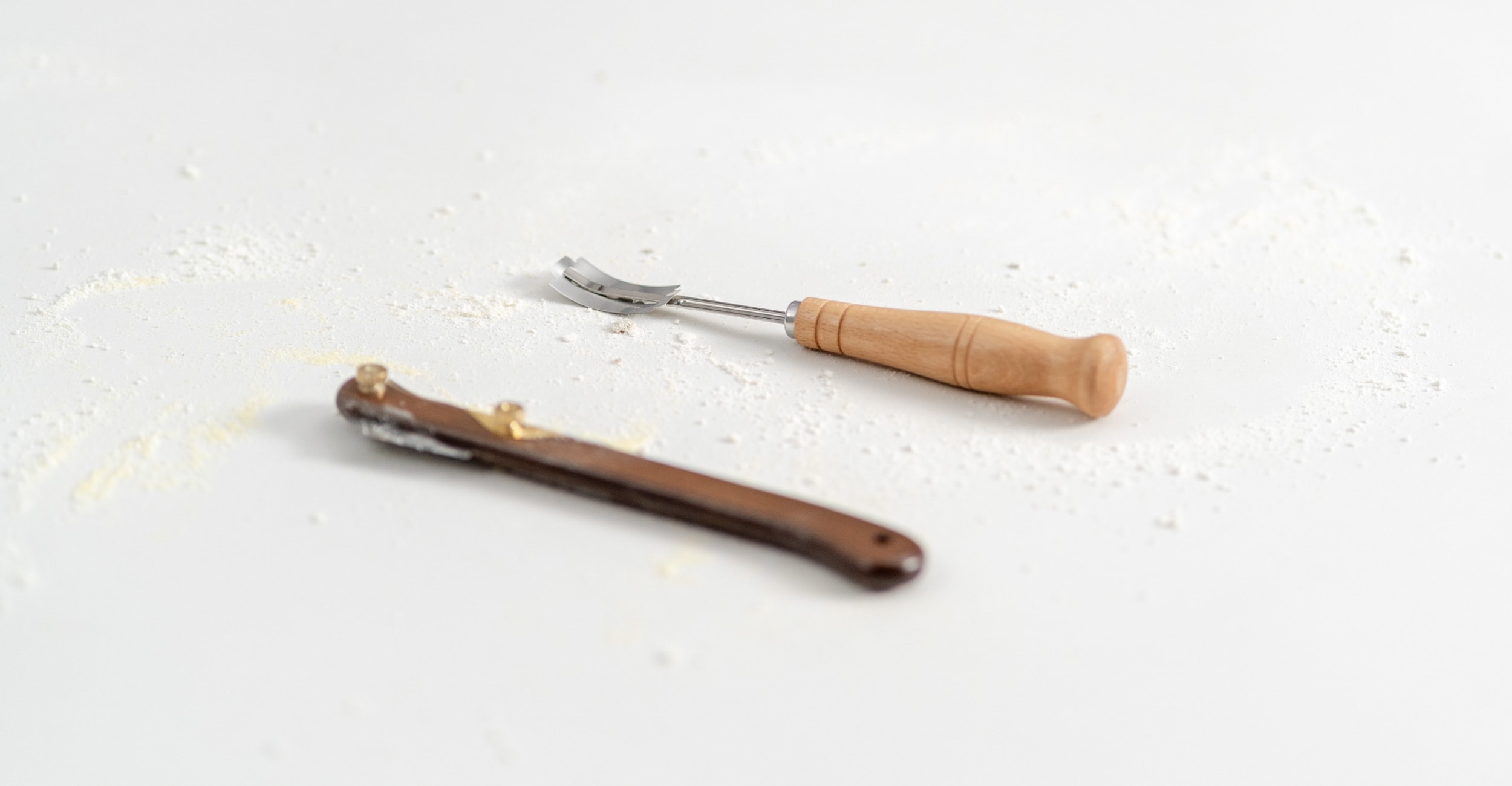
You can score a loaf of bread with just about anything sharp: a curved or straight lame, scissors, razor blade, serrated knife, or even a scalpel, but that doesn’t mean you should. There’s always the best tool for the job, and sometimes that’s the one that you have. Some tools definitely work better than others — you can see our recommendations below.
Please email us at techniques@challengerbreadware.com with your comments and questions.
As you know, your dough is full of water. And what happens to water when it’s heated? It turns to steam. If you didn’t score your dough, the steam would find the weakest spot – the path of least resistance – to find its escape. This is what bread bakers call blowouts, and we all hate them.
When you score your dough, you’re creating a weak spot, basically telling the steam where to escape. You’ll notice that most scoring patterns that you see are symmetrical, so that as the dough expands and the steam escapes, it’ll expand evenly so that the shape of your dough stays the way you intended.
When scoring your dough, our recommendation is to use a curved lame for batards and other dough shapes where you want a pronounced ear and a straight lame for boules and other dough shapes where you just need to give the steam a place to escape. Besides being decorative, scoring your dough before you put it into the oven is an essential step for most lean breads.
Be the first to know! We’ll send out emails with new products and promotions — as well as recipes and baking tips.
Necessary cookies are absolutely essential for the website to function properly. This category only includes cookies that ensures basic functionalities and security features of the website. These cookies do not store any personal information.
Any cookies that may not be particularly necessary for the website to function and is used specifically to collect user personal data via analytics, ads, other embedded contents are termed as non-necessary cookies. It is mandatory to procure user consent prior to running these cookies on your website.